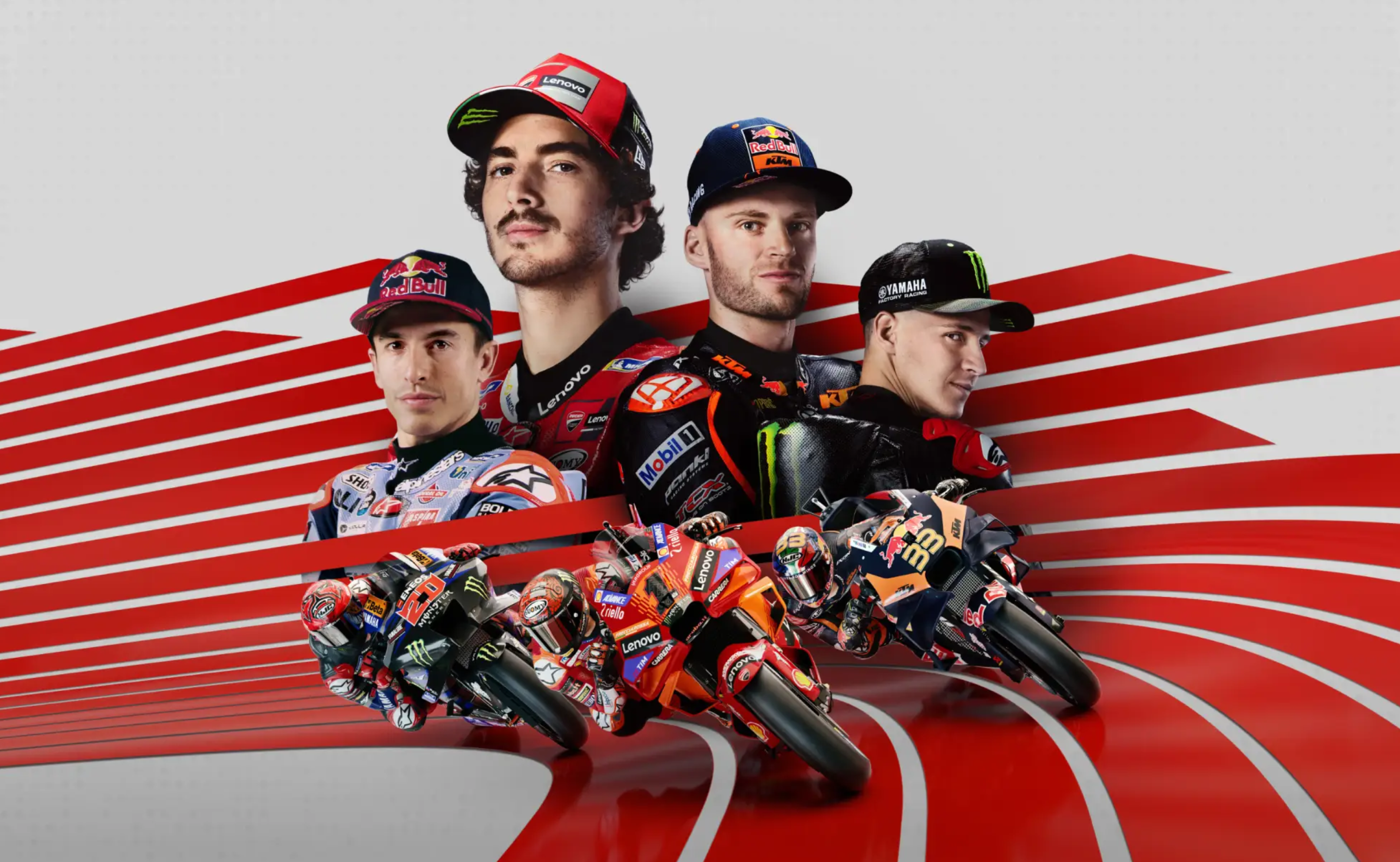MotoGP™24: FROM THE PADDOCK #2
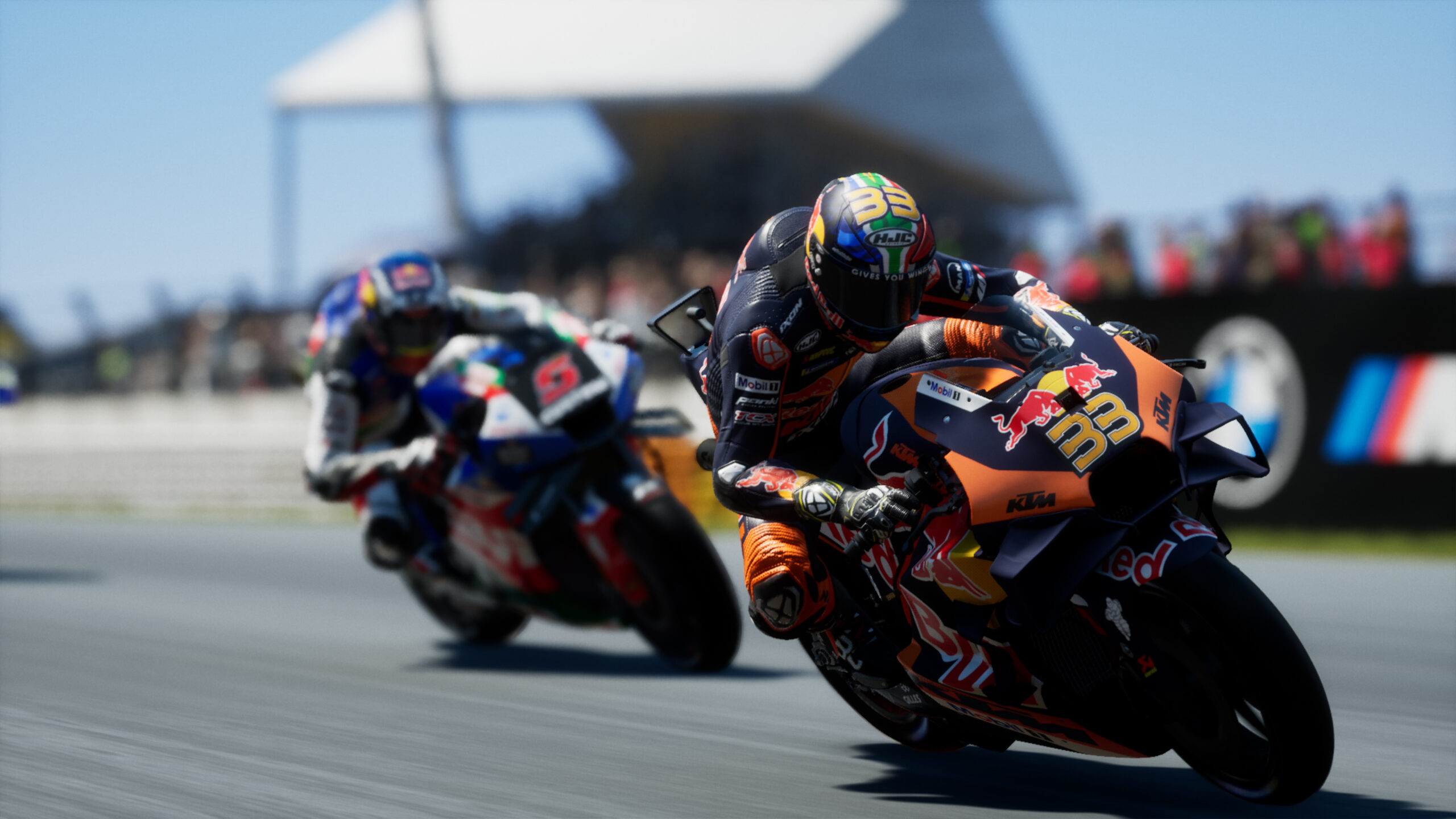
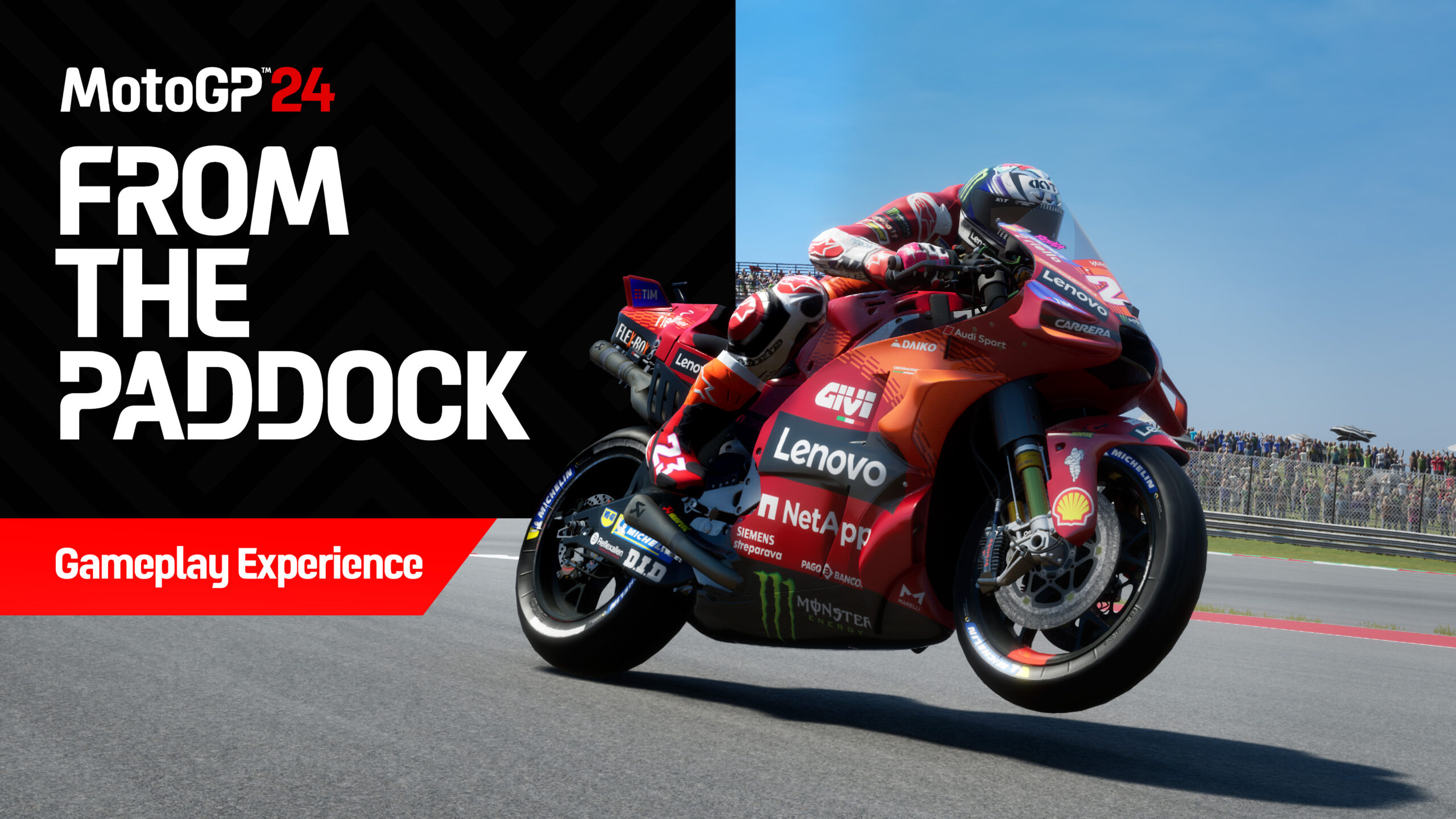
Our snooping into the MotoGP™24 development goes on, this time together with the Lead Game Designer Stefano Talarico and the Gameplay Designer Luca Pellizzer: get ready for a hefty gameplay tour!
MotoGP™24 is one month away. This means there’s still room to let you know it better. While last time we went for an overall introduction to warm up the engines, today we race at full speed to give you a deep look at the gameplay while you wait for May 2nd.
What are the big news in the latest installment in the series? Alongside features never seen before, are there tweaks that enhance the game compared to the previous one? To answer all these questions, we once again asked the developers to have a word with us.
The Lead Game Designer Stefano Talarico has joined us for the second time, and with him there’s the Gameplay Designer Luca Pellizzer: the goal is to dive deep into the gameplay, talking about the bigger changes as well as the Quality of Life improvements, crucial for a realistic experience without forgetting the approachability. Let’s mosey!
Let’s start with two basic yet not-so-simple questions: how’s the gameplay experience in MotoGP™24? Which steps did you take for it to be as it is today?
We took some time before starting the project, and we spent it looking back at our ideas and the feedback we received: we put them together, ultimately deciding to simplify the gameplay. Our goal was to soften the starting approach, while concurrently keeping the bar high to set a record on a track or compete in high-level races.
It’s an easy-to-learn, hard-to-master approach, something that even Celestino Vietti praised when he visited us to play the game and give his feedback. He said that compared to the past is now easier to avoid falls and feel the bike, thus understanding its limits, and this is all thanks to our deep focus on braking. Stopping the bike at the right point and, mostly, knowing how much margin you have before falling are the two key points in braking and those we worked on hard to let them be more intuitive.
Another feature that we thought we could rework was the management of the electronics, which affects several elements of the gaming experience such as corner exit, and the bike handling in the wet – very difficult compared to the dry. So we looked to balance these two features. The corner exit is now more intuitive: We read all the community feedback and focused on what they were not happy with, and then we worked specifically on the bending in corner exit. We did so to make it more gamer-friendly while also not tampering too much with the feature, which is mainly used for better gas management in corner exit: we wanted to avoid any excess, opting instead for better management to lead the player back onto real trajectories.
We also put great effort into the AI: from the first time we introduced A.N.N.A., we constantly searched for the best possible balancing, avoiding both extremes – to make it too much or too little aggressive. On one hand, the risks were falling into constant collisions from the AI during overtaking; on the other, seeing the riders queue up without even trying to overtake the player. We strived for the right balance, reworking our training systems and adding parameters until we reached an optimal result, that better responds to the Career’s tuning: it’s now better reflected on track when riders become more or less aggressive following specific events and riders’ personalities. This makes the career even more enjoyable because you can have actual feedback on what happened off the track.
[Luca Pellizzer, Gameplay Designer]
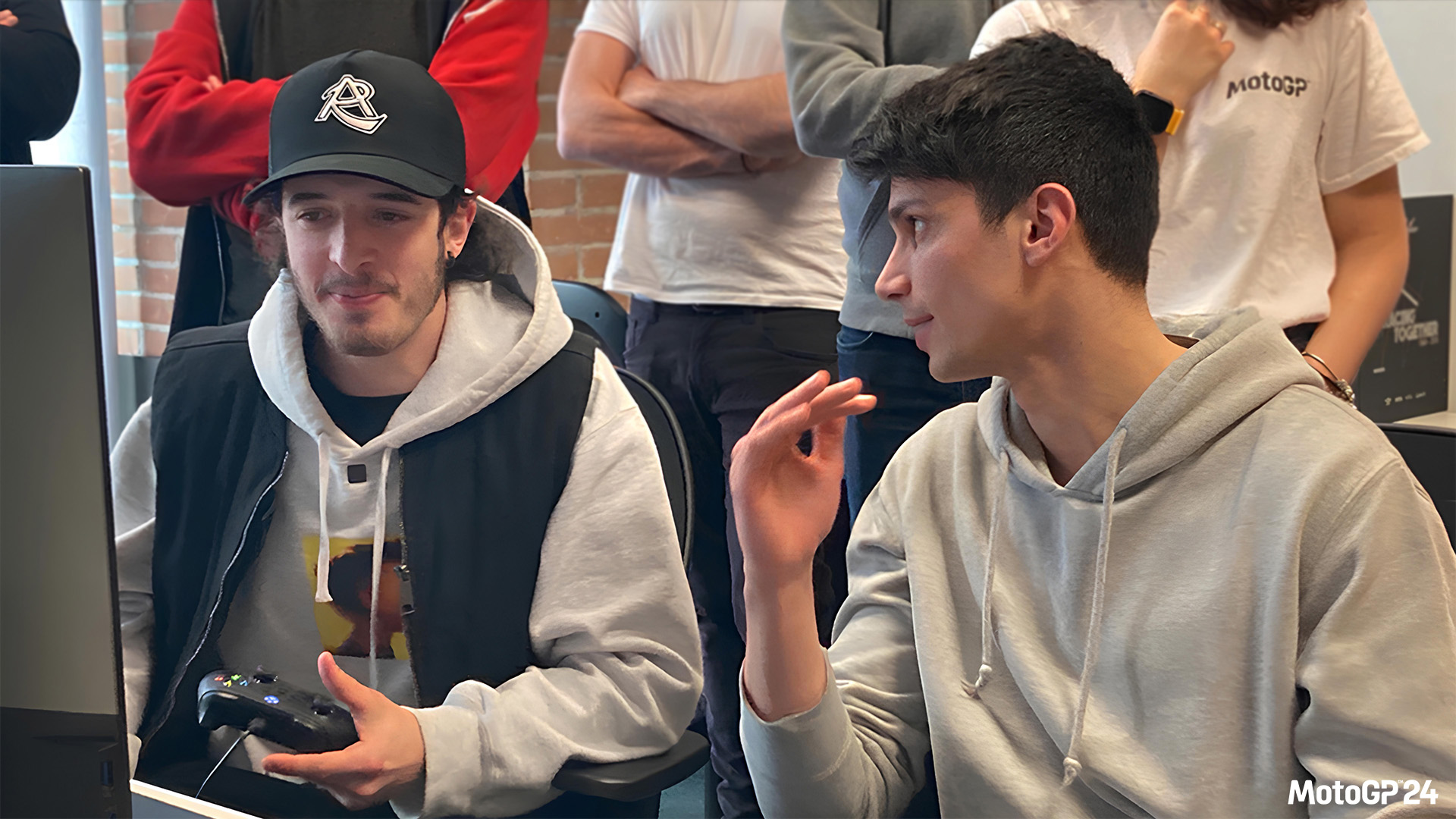
With the introduction of MotoGP™ Stewards above all, the Career has made a big leap forward: the races are beautiful to race. There’s more scuffle but less aggression because both the player and the AI are under a watchful eye. The AI realizes the penalties it could incur if it does not play fair and behaves accordingly: this makes the races not only unbiased but also more competitive and consequently more fun, because the AI’s intent is always to battle with you but now it has to consider the MotoGP™ Stewards.
[Stefano Talarico, Lead Game Designer]
So AI is aware that it has limitations.
AI has always been aware of having limits, the issue was finding the right balance of those same limits. The player is just an unpredictable variable in their perfect scheme. The moment the player does something outside the box, it is unexpected for the AI, and seeking the right balance serves precisely this, to teach it how, when, and how much it must react.
Furthermore, this year we are also working on adaptive difficulty, a great help tool for the players because they no longer have to struggle to find the right level of difficulty on their own for each track or condition: the system itself will establish it based on a constant analysis of their performances. This makes it easier to get on the track and start racing according to one’s abilities because there is a guarantee that the AI will adapt accordingly, making the challenge always intense, but balanced and still realistic.
[Luca Pellizzer, Gameplay Designer]
How does this work exactly? Is it an ongoing analysis or does the game have a history to draw on to conform to the player’s ability?
The system keeps a record of the player’s performance but if there’s a sudden surge in their skills, the AI will gradually improve accordingly. Its goal is to stay as close to the player’s level as possible and if for some reason the player suddenly improves a lot, the AI will adapt to keep the game fun and challenging.
[Luca Pellizzer, Gameplay Designer]
The most difficult part to work on is finding the optimal point that reconciles the amount of races taken into account by the AI and the type of performances it should adopt based on the player’s. Finding the right level of challenge is always very thorny.
[Stefano Talarico, Lead Game Designer]
I was tasked with finding a balance in Career, particularly: it’s fair for it to be an up-road hill for the player. Since you start with a very simple bike in a satellite team, it wouldn’t be right if the AI allowed you to aim for the top positions straight away: so, the objective is to ensure that it adapts to the player’s skills also in compliance with the team’s objectives. In short, you can’t go from zero to hero in the space of a single race because then the sense of constant challenge we are looking for would be missing. The AI’s task, and consequently ours, is to keep the players in the area they belong to, in a continuous crescendo up to the top.
[Luca Pellizzer, Gameplay Designer]
And this Adaptive Difficulty also follows our relationship with the other riders? If I’m not on good terms with someone he will be more aggressive in the next race, but if after two races we’re more neutral towards each other will the AI tune down accordingly?
Precisely. The key point of the relationships between player and riders, and consequently of the Adaptive Difficulty, is aggression because the rider’s performances are fixed: once established by the basic logic, the rider will adopt that level of competitiveness. On the player side, what will change will be the perception of the aggressiveness that said rider will have towards them, and this is what we manage: if you have a good relationship, or you aren’t fighting for the title, aggressiveness tends to be low; on the contrary, if you’re not in good terms with a rider or if you’re fighting for the title, the aggressiveness will be higher. This involves, on his end, more abrupt overtaking without not necessarily seeking contact, but neither will the rider avoid it at all costs.
[Luca Pellizzer, Gameplay Designer]
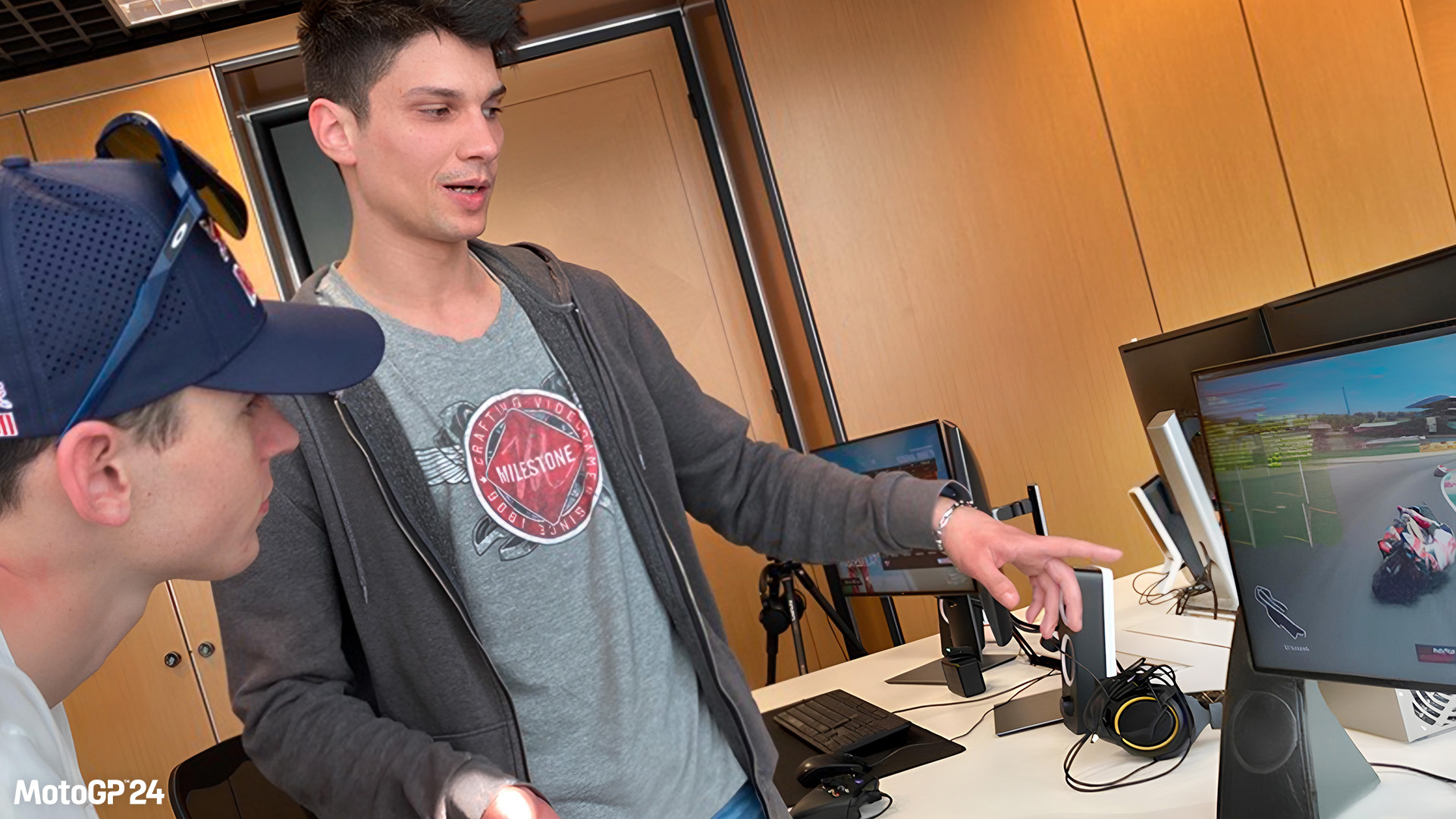
Adaptive Difficulty sounds very interesting, but how did you manage to keep realism despite the “adaptive” part?
Maintaining realism has been our main goal. Without revealing too much or boring everyone with too many details, Adaptive difficulty analyzes every session played, not just races, and uses a non-intrusive method to gradually adapt various aspects of our AIs, without changing the real rider’s skills that our players expect to see during a race weekend, or affecting the progress of the competition during gameplay. This way we can guarantee maximum accessibility without sacrificing realism and simulation.
[Stefano Talarico, Lead Game Designer]
On what basis are the riders’ stats established?
Initially, it’ll be based on the performances of previous years, since the real Championship had not yet started when we began the development phase; then, with the Championship underway, we’ll update everything based on what happens. For example, we now start with Bagnaia and Martín being very competitive but if, for some reason, one or even both of them were to drop in performance, and therefore in the standings, we will adjust their stats accordingly. That said, Career riders have the chance to choose different skills and grow: therefore those who were at a high level can drop and those who were at a low level can rise. This is to ensure that the protagonists also change season after season.
[Luca Pellizzer, Gameplay Designer]
In addition, the game’s seasons mirror what happens in real life. For example, suppose the player’s rider races in a satellite team and, through a series of victories, takes it higher than initial expectations. In that case, the manufacturer will back that team more – making it more desirable to real riders, allowing it to grow and receive greater development. This will lead to a change in the balance of power within all teams because, as in reality, a team that achieves better results gains more interest, more sponsors, and so on.
[Stefano Talarico, Lead Game Designer]
The changes we’re talking about are not tied to the individual rider only, but also to the team he races for. In Career, as you know, you can develop your bike, which stats are initially based on the previous year. Following the results on the track and further logics, all teams receive development packages, which are applied once during the season and serve to counterbalance the performance on track. The more performing players are, the more they have the opportunity to develop their bike and therefore make it more competitive compared to others. All without following any scripted path. One season the leader manufacturer can be Ducati, and two seasons later it can be Honda. All this always takes into account their real counterparts. Each manufacturer has its features and these are faithfully reproduced in the game.
[Luca Pellizzer, Gameplay Designer]
What else can you share, gameplay-wise? Maybe some miscellanea info…
The bike’s agility for example. We aimed to have a more agile and stable bike, less troublesome. Another very important change gameplay-wise is fuel management. In past years we had three power mappings, of which PW3 did not allow you to finish the race if used continuously; this year, instead, all three mappings allow you to finish the race. What changes is the delivery and therefore the driving. It’s now possible to start and finish a race in PW3, at the price of a more difficult bike to ride and manage. PWR2, on the other hand, leads to better power delivery and a bike that is easier to manage, but still capable of letting you finish the race. This can be useful in the wet especially: if you don’t want too intrusive electronics with a traction control that limits the throttle opening to prevent you from falling, you can lower to PWR2 to have lower traction but better throttle management.
[Luca Pellizzer, Gameplay Designer]
Then there are smaller quality-of-life improvements, such as the fact that the riders read the qualifications and the various situations during free practice better. The latter is seen more as a testing phase for track and tires, without necessarily the need to aim for the best time. On the contrary, qualifying is approached with a more competitive mind and therefore the best time is sought, particularly during the final minutes. This led us to rework the exit logic from the pits, so that now the riders, especially those who are one step from qualifying, tend to come out last to have the proper chance to obtain the best time. These are all small things, perhaps not immediately obvious but fundamental to building the overall experience.
[Stefano Talarico, Lead Game Designer]

We have also reviewed the logic of the suggested setups. Previously they were linked to the track while now the tires are recommended based on the temperature of the asphalt and air. By doing so, if one session is colder than another, despite racing on the same track, the game will suggest soft tires rather than medium ones.
[Luca Pellizzer, Gameplay Designer]
This is linked to a greater dynamism of the Dynamic Weather this year. Having the same weather conditions doesn’t mean having the same micro-conditions: it can be more or less windy, the temperature can be higher or lower, etcetera. And it’s all linked to the weather conditions of the previous sessions. Take Saturday for example: with clear conditions throughout the day, we will have a colder morning, while towards midday the temperatures will be warmer, and so on.
[Stefano Talarico, Lead Game Designer]
Another big improvement is related to Flag-to-Flag and concerns the AI competitiveness in returning to the pits. This year we trained the artificial intelligence not only to go around the track in a neural manner but also to run the long lap and enter and exit the pits. This learning means that when the AI decides to enter the pits it will do so more quickly and efficiently.
A further interesting improvement is on the bike’s settings side: we reviewed the conversations with the telemetrists, a part that we hadn’t focused on much in the past and to which we returned aiming for simplification. If someone speaks to the telemetrist it’s because they don’t know how to handle the settings, which is why the dialogues should be easily understandable: we have therefore simplified the texts to make the conversation clear without necessarily knowing technicalities. In this, having the chance to speak with real telemetrists was undoubtedly helpful in finding the right middle ground between excessive technicalities and simplification. Speaking of telemetrists, one in particular who works in Moto2™ offered valuable advice thanks to which we made drastic changes to the Moto2™ physics; changes that Celestino Vietti himself praised.
[Luca Pellizzer, Gameplay Designer]
We hope you’ve enjoyed reading this second chapter of MotoGP™24: From the Paddock and are looking forward to learning more from behind the scenes of the game over the coming weeks!

